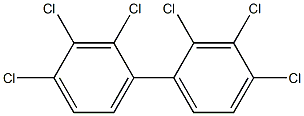| Company Name: |
J & K SCIENTIFIC LTD.
|
| Tel: |
010-82848833 400-666-7788 |
| Email: |
jkinfo@jkchemical.com |
| Products Intro: |
Product Name:Aroclor 1260
CAS:11096-82-5
Purity:35 μg/ML in Isooctane Package:1ML
|
| Company Name: |
Nanjing Chemlin Chemical Co., Ltd
|
| Tel: |
025-83697070 |
| Email: |
info@chemlin.com.cn |
| Products Intro: |
Product Name:Arclor 1260
CAS:11096-82-5
Purity:98% Package:1mg;5mg;50mg;500mg;5g;50g
|
| Company Name: |
Spectrum Chemical Manufacturing Corp.
|
| Tel: |
021-021-021-67601398-809-809-809 15221380277 |
| Email: |
marketing_china@spectrumchemical.com |
| Products Intro: |
Product Name:AROCLOR 1260
CAS:11096-82-5
|
|
| | AROCLOR 1260, 1X1ML, ISO, 1000UG/ML Basic information |
| Product Name: | AROCLOR 1260, 1X1ML, ISO, 1000UG/ML | | Synonyms: | chlorodiphenyl(60%cl);kanechlor600.;phenoclordp6;polychlorinatedbiphenyl(aroclor1260);Aroclor 1260;AROCLOR 1260, 1X1ML, ISO, 1UG/ML;AROCLOR 1260, 1X1ML, HEXANE 1000UG/ML;AROCLOR 1260, 1X5ML, TRANSFORMER OIL, 50 MG/KG | | CAS: | 11096-82-5 | | MF: | C12H4Cl6 | | MW: | 360.87816 | | EINECS: | | | Product Categories: | Separate Source Standards;Single Component Solutions;2000/60/EC;A;Alphabetic;AR to AZEnvironmental Standards;Aroclors, PCBs, and Dioxins;AroclorsEnvironmental Standards;AroclorsMethod Specific;European Community: ISO and DIN;Volatiles/ Semivolatiles;8000 Series Solidwaste Methods;AroclorsEPA;CLP Standards;Method 8082EPA;OLM04 Statement of WorkEnvironmental Standards | | Mol File: | 11096-82-5.mol |  |
| | AROCLOR 1260, 1X1ML, ISO, 1000UG/ML Chemical Properties |
| Melting point | 115.76°C (estimate) | | Boiling point | 457.69°C (rough estimate) | | density | 1.5800 (estimate) | | vapor pressure | 130.5 at 25 °C (estimated using GC retention data, Foreman and Bidleman, 1985) | | refractive index | 1.6270 (estimate) | | Fp | 11 °C | | storage temp. | room temp | | solubility | Soluble in most solvents (U.S. EPA, 1985) | | Water Solubility | 14.4ug/L(20 ºC) | | Henry's Law Constant | 0.244, 0.435, 0.754, 1.27, 2.10, 3.36, 5.27, 8.09, and 12.1 at 0.0, 5.0, 10.0, 15.0, 20.0, 25.0, 30.0,
35.5, and 40.0 °C, respectively (predicted, Burkhard et al., 1985) | | EPA Substance Registry System | Aroclor 1260 (11096-82-5) |
| | AROCLOR 1260, 1X1ML, ISO, 1000UG/ML Usage And Synthesis |
| Chemical Properties | Soft, sticky, light-yellow resin; approx-
imately 6.3 chlorine atoms per molecule. | | Physical properties | Light yellow, sticky, soft, nonflammable resin with a faint odor | | Uses | Secondary plasticizer for polyvinyl chloride; in polyester resins to increase strength of
fiberglass; varnish formulations to improve water and alkali resistance; as an insulator fluid for
electric condensers and as an additive in very high pressure lubricants. In fluorescent and highintensity
discharge ballasts manufactured prior to 1979 (U.S. EPA, 1998).
Also used in wire or cable coatings; impregnants in cotton and asbestos braided insulation;
coating on glass air filter pads, metal mesh to filter air and gas streams (Monsanto, 1960).
At a concentration of 5 to 25 wt %, increased the effective kill-life of the lindane spray up to 10
times. May have been used in chlordane and BHC insecticide formulations and in melt coatings
for paper and cloth. In various nitrocellulose lacquers to impart weather resistance, luster,
adhesion, and decreased burning rate. These lacquers may also contain dibutyl phthalate and/or
tricresyl phosphate. A typical paper lacquer may contain acetone, isobutyl acetate, ethanol, toluene
and up to 20 wt % PCB-1260 (Monsanto, 1960). | | General Description | Viscous oily liquid. | | Air & Water Reactions | Insoluble in water. | | Reactivity Profile | Simple aromatic halogenated organic compounds are very unreactive. Reactivity generally decreases with increased degree of substitution of halogen for hydrogen atoms. | | Health Hazard | ACUTE/CHRONIC HAZARDS: Toxic irritant. Hazardous decomposition products. | | Fire Hazard | Some may burn but none ignite readily. Containers may explode when heated. Some may be transported hot. | | Safety Profile | Confirmed carcinogen
with carcinogenic and neoplastigenic data.
Moderately toxic by ingestion and skin
contact. Experimental reproductive effects.
Mutation data reported. When heated to
decomposition it emits highly toxic fumes of
Cl-. Used in heat transfer, hydraulic fluids,
lubricants, and insecticides. See also
POLYCHLORINATED BIPHENYLS. | | Environmental fate | Biological. Reported degradation products by the microorganism Alcaligenes BM-2 for a
mixture of polychlorinated biphenyls include monohydroxychlorobiphenyl, 2-hydroxy-6-oxochlorophenylhexa-
2,4-dieonic acid, chlorobenzoic acid, chlorobenzoylpropionic acid, chlorophenylacetic
acid, and 3-chlorophenyl-2-chloropropenic acid (Yagi and Sudo, 1980). When
PCB-1260 was statically incubated in the dark at 25 °C with yeast extract and settled domestic
wastewater inoculum, no significant biodegradation was observed (Tabak et al., 1981).
Photolytic. PCB-1260 in a 90% acetonitrile/water solution containing 0.2 to 0.3 M sodium
borohydride and irradiated with UV light (λ = 254 nm) reacted to yield dechlorinated biphenyls.
After 2 h, about 75% of the congeners were destroyed. Without sodium borohydride, only 10% of
the congeners had reacted. Products identified by GC include biphenyl, 2-, 3- and 4-
chlorobiphenyl, six dichlorobiphenyls, three trichlorobiphenyls, 1-phenyl-1,4-cyclohexadiene, and
1-phenyl-3-cyclohexene (Epling et al., 1988).
Chemical/Physical. Zhang and Rusling (1993) evaluated the bicontinuous microemulsion of
surfactant/oil/water as a medium for the dechlorination of polychlorinated biphenyls by
electrochemical catalytic reduction. The microemulsion (20 mL) contained didodecyldimethylammonium
bromide, dodecane, and water at 21, 57, and 22 wt %, respectively. The catalyst used
was zinc phthalocyanine (4.5 nM). When PCB-1260 (100 mg), the emulsion and catalyst were
subjected to a current of mA/cm2 on 11.2 cm2 lead electrode for 18 h, a dechlorination yield of
>99.8 % was achieved. Reaction products included minor amounts of mono- and dichlorobiphenyls
(0.02 mg), biphenyl and reduced alkylbenzene derivatives. |
| | AROCLOR 1260, 1X1ML, ISO, 1000UG/ML Preparation Products And Raw materials |
|